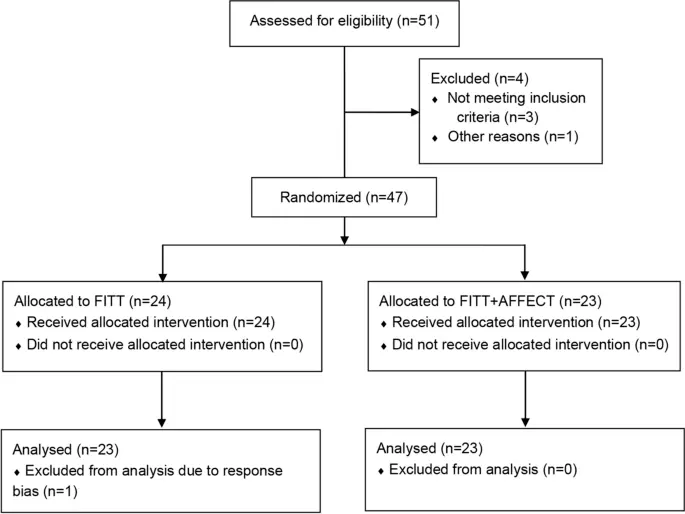People often chase big moments for happiness – that promotion, new car, or dream vacation – while missing the joy right in front of them.
My years of studying happiness, both personally and professionally, revealed something surprising: true happiness isn’t about having more money (though research shows $75,000 annually helps) or waiting for perfect family moments. It’s about becoming skilled at finding joy in ordinary days.
The good news? You don’t need to overhaul your life or memorize happiness quotes to feel more content. Small, considered actions can create lasting joy – and science backs this up. Working with hundreds of clients taught me that happiness is a skill we can develop, just like learning to play an instrument or speak a new language.
Let me share 10 practical techniques that helped me and countless others find genuine happiness in life’s simple moments. These aren’t quick fixes or temporary mood boosters – they’re proven strategies that can revolutionize your daily experience.
Practice Mindful Breathing

One of the most powerful tools for happiness lies right under our nose – quite literally. My experience as a mindfulness practitioner has taught me that our breath holds the key to revolutionize our emotional state and find joy in everyday moments.
Understanding Breath-Happiness Connection
The sort of thing I love is how our breathing patterns connect to our emotional state. Research shows that different breathing techniques can substantially improve mood and reduce anxiety better than traditional mindfulness meditation. My personal experience confirms this – we can influence our nervous system and brain states by consciously controlling our breath.
Mindful Breathing Techniques
My practice has shown that cyclic sighing – a technique emphasizing prolonged exhalations – yields remarkable results. Studies indicate it creates better improvement in mood compared to other breathing practices. These three powerful techniques work well when you keep taking them:
- Cyclic Sighing: Deep breaths followed by extended exhales for psychological relief
- Box Breathing: Equal duration of inhalations, retentions, and exhalations (4 counts each)
- Mindful Breath Awareness: Simple focus on natural breath rhythm
Daily Breathing Exercises for Joy
Breathing exercises are beautifully accessible – they need just five minutes of your day to make a real difference. Research demonstrates that practicing breathwork for five minutes daily over a month can improve positive feelings and reduce anxiety.
Scientists call it “paced breathing” – consciously inhaling for 4 counts and exhaling for 6 counts. This simple pattern activates our vagus nerve and signals our body to enter a state of calm.
These practices shine through their simplicity. Slow, rhythmic breathing helps me whenever I feel overwhelmed or disconnected from joy. Studies reveal that slowing our breath to approximately six breaths per minute triggers profound physiological changes.
The benefits grow as we practice these techniques consistently. Adding these breathing exercises to my daily routine – before meals or during morning activities – helps maintain steady contentment rather than chasing fleeting moments of happiness.
Cultivate Daily Gratitude

My experience studying happiness has taught me that gratitude goes beyond saying “thank you.” It’s a powerful tool that changes how we feel joy in life. People who count their blessings tend to be happier and show fewer signs of depression.
Starting a Gratitude Journal
A gratitude journal can be life-changing when you want to cultivate happiness. A newer study, published in, shows that 15 minutes of gratitude journaling five days weekly for six weeks can improve mental wellness and create lasting changes in how we see life. These prompts help me get started:
- What made me smile today?
- Who made a positive difference in my life recently?
- What challenge taught me something valuable?
- What simple pleasure did I enjoy today?
- What about my body/health am I thankful for?
Gratitude Practice Methods
Journaling isn’t the only way to build gratitude into your daily routine. Writing gratitude letters leads to better mental health, with benefits lasting 12 weeks after the exercise. The sort of thing I love is what scientists call the “find, remind, and bind” function of gratitude. It helps us spot good people in our lives, remember our positive relationships, and strengthen these bonds.
Gratitude does more than promote positive thinking – it trains our brains to notice good things. People who wrote gratitude letters reported substantially better mental health compared to those who only received counseling.
Measuring Gratitude’s Effect on Happiness
Science strongly supports gratitude’s role in happiness. Cardiac patients who managed to keep gratitude journals slept better, felt less tired, and showed lower inflammation levels. These benefits build up over time rather than appearing overnight.
My clients who practice gratitude regularly tell me they feel more optimistic and resilient. This matches research that shows how gratitude improves self-esteem, positive emotions, and overall life satisfaction. The best part? Brief gratitude practices can boost happiness by 10% right away and reduce depressive symptoms by 35%.
Nurture Relationships

My research about how nature affects happiness reveals that our relationships might be the most powerful joy multiplier of all. Research consistently shows that satisfying relationships don’t just make us happier – they lead to better health and longer life.
Building Meaningful Connections
The sort of thing I love is how we’re hardwired for connection – it’s not just a want, it’s a biological need. Studies reveal that people with richer social networks grow up to be happier adults. My work with clients shows that those who prioritize meaningful relationships experience more consistent joy than those pursuing happiness through material success alone.
Quality Time Techniques
I found that there was a simple truth – quality trumps quantity when nurturing relationships. Research indicates that 74% of adults cite in-person socializing as key to their happiness. These techniques work best:
- Active Listening: Make eye contact and focus fully without preparing responses
- Shared Activities: Plan regular activities that create mutual experiences
- Intentional Connection: Schedule dedicated time for meaningful conversations
- Digital Detox: Set aside phones during quality time together
Relationship Maintenance Practices
Strong relationships need consistent effort – much like tending a garden. Studies show that it takes about 60 hours to cement a friendship. Successful relationship maintenance thrives on small, consistent actions rather than grand gestures.
Each genuine connection releases oxytocin that reduces anxiety and improves focus. This explains why even brief positive interactions boost our mood. My experience shows that relationships create what experts call a “positive social, emotional, and physical well-being spiral”.
Note that you don’t need countless connections – research confirms that quality matters more than quantity. Time invested in nurturing meaningful relationships builds happiness today and creates a foundation for lasting joy and resilience.
Move Your Body

Movement has become my secret weapon in the interests of happiness. My research and personal experience show that exercise isn’t just about physical health. It’s a powerful tool that can change our daily experience of joy.
Exercise and Happiness Connection
The speed at which exercise can affect our mood amazes me. Research shows that just 15 minutes of cardiovascular exercise works like an anti-depressant. People who exercise have a 30% lower relapse rate over the next two years. This shows we don’t need to spend hours at the gym to feel better.
Simple Movement Practices
My work with clients has shown that simple movement practices work best. Studies show that even 10 minutes of recreational exercise daily reduces depression risk by a lot. These movement practices work well:
- Brisk walking or light jogging
- Dancing to favorite music
- Gardening or yard work
- Swimming or water aerobics
- Simple stretching routines
Two-minute movement breaks can boost accuracy rates and happiness levels while reducing stress. I take brief movement breaks during work hours and see the difference.
Creating an Active Lifestyle
My biggest lesson is that an active lifestyle isn’t about intense workouts. It’s about consistency and joy. Research shows that 150 minutes of moderate-intensity aerobic activity weekly improves overall well-being by a lot. My clients break this down into manageable 30-minute sessions, five days a week.
Every minute of moderate to vigorous activity adds to our happiness goals. The key lies in finding activities you truly enjoy. Walking your dog, playing with your children, or taking a dance class – the best exercise is the one you’ll stick with.
The American Heart Association’s research confirms that regular physical activity eases stress, anxiety, depression, and anger. Social connections combined with movement create an even stronger effect on happiness. You could join a walking group or exercise with family members.
Create Joy Rituals

Daily joy rituals have changed my approach to finding happiness. My research and personal experience show that these intentional practices can substantially boost our well-being with consistent practice.
Morning Joy Routines
The way you start your day can set a positive tone that lasts. Research shows that people who begin their mornings with mindful practices report increased productivity and happiness throughout the day. These morning joy rituals are my favorites:
- Gratitude reflection (3 things you’re grateful for)
- Mindful breathing exercises
- Quiet moments with morning coffee or tea
- Short meditation session
- Light stretching
The sort of thing I love about these morning practices is that they don’t need grand gestures – they simply need us to embrace small moments that bring genuine happiness.
Evening Happiness Practices
Our evening routines deeply affect our overall well-being. Studies indicate that consistent evening routines help reduce anxiety and promote better sleep quality. Reflection practices before bed help process experiences and create a positive tone for the next day.
The “Three Good Things” exercise stands out as a powerful evening practice. This simple ritual strengthens relationships and promotes resilience. You write down three positive moments from your day and reflect on each for at least 15-20 seconds.
Mini Joy Breaks Throughout Day
My happiness experience changed completely when I found that there was power in joy breaks – small, intentional pauses throughout the day. Research shows that these short breaks to reconnect with yourself can substantially reduce stress and boost productivity.
A “joy break box” serves as a collection of quick, mood-lifting activities that take five minutes or less. These aren’t grand gestures but rather small, meaningful gifts to yourself. These breaks work best when scheduled proactively, before stress takes over.
Joy rituals’ beauty lies in their simplicity and accessibility. Your morning coffee in silence, a midday walk, or evening gratitude journaling create a framework for lasting happiness that doesn’t depend on external circumstances.
Practice Self-Compassion
My years of studying happiness have shown that being kind to ourselves might be the most overlooked path to joy. Research shows that people with higher self-compassion experience lower levels of anxiety and depression. This makes it a vital skill to build lasting happiness.
Self-Compassion Techniques
Self-compassion goes beyond positive thinking. You need to treat yourself with the same kindness you’d offer a friend. Studies show that even brief self-compassion practices can increase happiness by 10% and reduce depressive symptoms by 35%. These techniques have worked best for me:
- Write a compassionate letter to yourself about a difficult situation
- Practice mindful breathing during moments of stress
- Use soothing touch (like placing a hand on your heart)
- Practice daily self-compassion meditation
Overcoming Self-Criticism
Self-criticism tries to protect us but often blocks our path to true happiness. Research shows that self-compassionate people are less likely to suppress unwanted thoughts and emotions. This guides them toward better emotional regulation. My inner critic changed when I realized it was trying to help, just in a misguided way.
Building Self-Love Habits
Self-compassion works like a muscle – you can make it stronger with practice. Studies reveal that just three weeks of self-compassion training leads to significant increases in optimism and self-efficacy. My clients start with these small daily practices:
Morning Self-Check: Begin each day by asking yourself what you need Comfort Breaks: Take brief moments throughout the day to practice self-soothing Evening Reflection: Write about one way you showed yourself kindness
Self-compassion training programs show lasting benefits. Participants report improved mental health even 12 weeks after completion. These practices create what researchers call a “healthy domino effect” – as we become kinder to ourselves, we naturally grow more resilient and better equipped to handle life’s challenges.
Engage in Flow Activities

The sort of thing I love about happiness came from understanding what psychologists call “flow” – that magical state where time seems to vanish and we become completely absorbed in what we’re doing. My research shows that people who experience flow regularly report substantially higher levels of life satisfaction.
Understanding Flow State
Flow’s combination of challenge and enjoyment fascinates me. Flow happens when we’re fully immersed in an activity that stretches our abilities just enough to keep us going. Research shows flow experiences have intense concentration, loss of self-consciousness, and a distortion of temporal experience. The amazing part? Studies show that flow doesn’t just feel good – it creates well-being and general life satisfaction.
Finding Your Flow Activities
My work with clients has shown that flow activities are unique to each person but share common traits. Activities should be:
- Rewarding by nature
- Challenging but matched to your skill level
- Clear in their goals and feedback
- Able to hold your complete attention
Research reveals that flow needs about 90 minutes of undistracted time to develop fully. This explains why quick, interrupted sessions don’t feel as satisfying as longer periods of deep work.
Incorporating Flow into Daily Life
Flow can be part of our daily routine – this insight changed everything. Research shows that people who experience flow regularly develop other positive traits like better concentration, self-esteem, and performance. I create “flow-friendly” spaces by removing distractions and setting aside time to focus deeply.
Flow combines positive emotion with a sense of meaning – that’s what makes it special. I tell my clients to find their peak mental alertness times and schedule important tasks then. This approach boosts performance and makes activities more enjoyable, according to studies.
The key is starting small – even 15 minutes of focused work can build neural pathways that make flow more available. Our brains can learn to enter this optimal state more easily with consistent practice, creating a path to both productivity and happiness that lasts.
Simplify Your Life

Research about happiness brought me to a remarkable insight: a simpler life might be our best path to lasting joy. Studies show that practicing voluntary simplicity connects to a better mood, increased mindfulness, lower stress and anxiety, and stronger relationships.
Decluttering for Happiness
My work with clients showed that physical clutter overwhelms our brains with too much stimuli. This makes focusing and relaxing harder. The interesting part is that a tidy physical space naturally helps clear our emotional space too. These decluttering practices work best:
- Remove belongings that no longer add value
- Question true needs before making impulse purchases
- Capture memories through photos instead of keeping items
- Spend time on relationships rather than managing stuff
- Give experiences as gifts instead of physical mementos
Digital Minimalism Practices
Digital decluttering reshaped my path to happiness. Research shows that cutting back on smartphone use frees up two to four hours each day while boosting energy levels and strengthening relationships. My journey to become skilled at digital minimalism includes simple steps like switching off most notifications and using Do Not Disturb mode from 9 PM to 6 AM.
Simplification Strategies
A key lesson stands out: simplifying isn’t about giving up things – it creates space for what matters most. Studies show that people who welcome minimalism have better cognitive function and sleep quality. Letting go of excess opens up room for deeper connections and richer experiences.
The sort of thing I love about simplification is its snowball effect. Research confirms that voluntary simplicity brings psychological benefits that grow over time. A decluttered physical space, digital life, and daily routine don’t just create order – they unlock deeper joy and contentment.
Spread Joy to Others

My happiness research revealed something powerful: making others happy creates an amazing loop of joy that comes right back to you. Research shows that people who volunteer have lower rates of depression and anxiety [link_1], especially those 65 and older.
Acts of Kindness Ideas
The sort of thing I love is how simple acts trigger positive changes in our brain chemistry. Our reward center releases serotonin, dopamine, and endorphins when we help others. Here are some science-backed kindness activities that work:
- Write positive sticky notes for strangers
- Buy coffee for the person behind you
- Help elderly neighbors with errands
- Send unexpected gratitude messages
- Leave encouraging comments on social media
Community Involvement
My research shows that volunteers enjoy better physical health than those who don’t volunteer [link_2]. Volunteering boosts self-confidence and life satisfaction. Community service creates what researchers call a “positive social, emotional, and physical well-being spiral”.
Joy-Sharing Practices
Sharing joy multiplies its effect in amazing ways. People who participate in altruistic behaviors consistently report higher life satisfaction throughout their lives [link_3]. Just thinking about being generous creates real mood-boosting benefits in the brain.
Small acts make big differences. Two-minute acts of kindness can improve accuracy rates and happiness levels while reducing stress. Helping close friends and family brings even more benefits to our well-being, especially with stronger relationships.
Research suggests that women gain more benefits than men from altruistic acts, as helping others connects more strongly with women’s well-being. This knowledge changed my approach to happiness – I now focus on creating ripples of joy that benefit everyone around me.
Conclusion
My research and personal experience have taught me that lasting happiness doesn’t need dramatic life changes. Scientific evidence shows that small, considered actions create meaningful joy through consistent practice – from mindful breathing to acts of kindness.
These ten techniques create a powerful toolkit for happiness together. Mindful breathing brings calm to our nervous system, and gratitude shapes our new viewpoint. Natural surroundings help reduce stress levels, while strong relationships give us emotional support. Our mood improves with regular movement, and joy rituals anchor happiness in daily routines. We bounce back from setbacks through self-compassion, and flow activities help us live in the present moment. A simpler life creates room for what truly matters, and sharing joy with others multiplies our own happiness.
These approaches are beautifully simple – you can start any technique today, wherever you are. People who use even one of these practices see notable improvements in their well-being within weeks, according to research.
Note that happiness isn’t a destination but a skill we can develop with practice. Begin with one technique that appeals to you most, then add others as they become natural parts of your daily life. Life’s simple moments often hide true joy – we just need to learn how to spot and nurture it.
Frequently Asked Games
Practice mindfulness by paying attention to small pleasures like a warm cup of coffee or a beautiful sunset. Keep a gratitude journal to appreciate the little things. Engage in activities you enjoy, even if just for a few minutes each day. Connect with loved ones regularly and take time to savor positive experiences.
Incorporate regular physical activity into your routine, even if it’s just a short daily walk. Practice deep breathing or meditation to reduce stress. Perform random acts of kindness for others. Spend time in nature when possible. Simplify your life by decluttering your physical and digital spaces.
Strong social connections are crucial for well-being. Make time for meaningful conversations with friends and family. Engage in shared activities to create bonding experiences. Practice active listening and show empathy. Regular social interactions release feel-good hormones and provide emotional support, leading to increased life satisfaction.
Yes, consistent small actions can have a big impact over time. Create daily rituals that bring you joy, like a relaxing evening routine or a morning gratitude practice. Engage in “flow” activities that fully absorb your attention. Practice self-compassion and positive self-talk. These habits can rewire your brain for more positive thinking and emotions.
Acts of kindness and volunteering activate the brain’s reward center, releasing feel-good chemicals. Helping others can boost self-esteem and provide a sense of purpose. Start with small gestures like complimenting someone or helping a neighbor. Consider regular volunteering for a cause you care about. The positive impact you make on others can create a reciprocal cycle of happiness.







